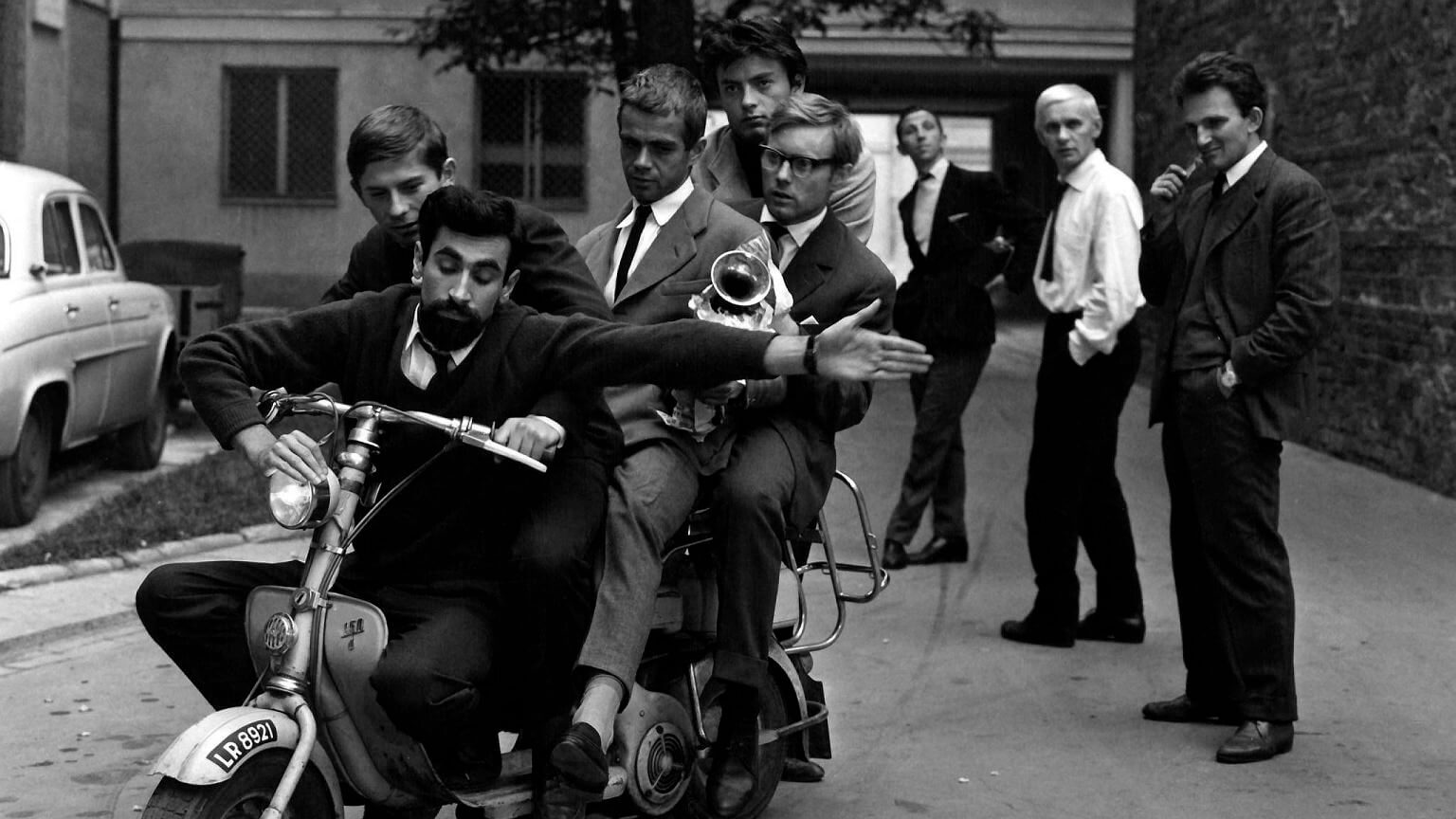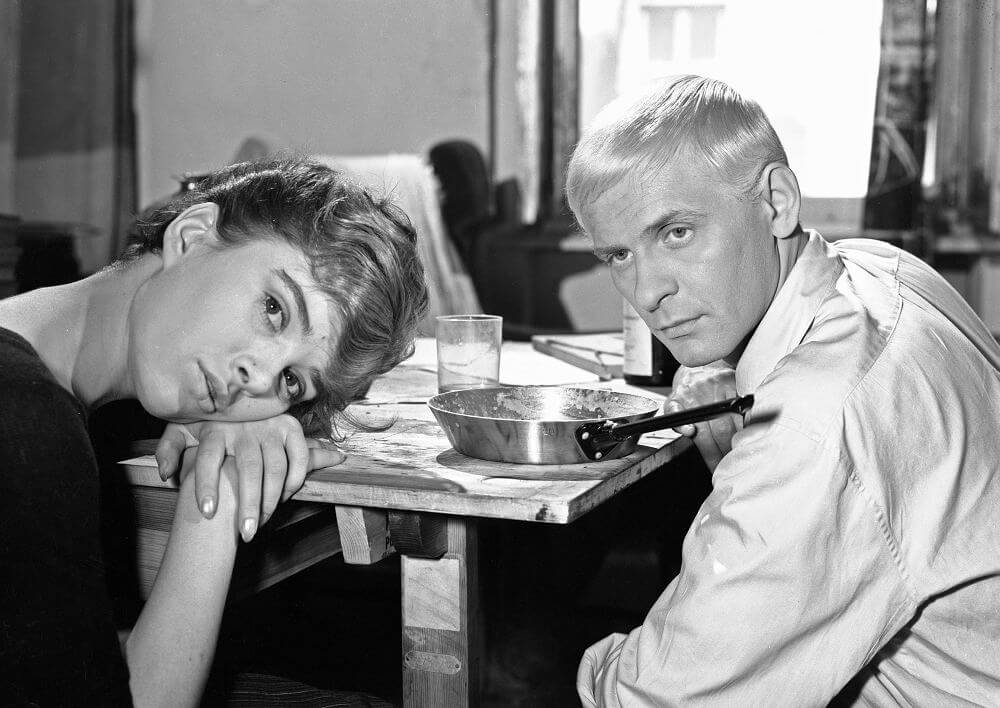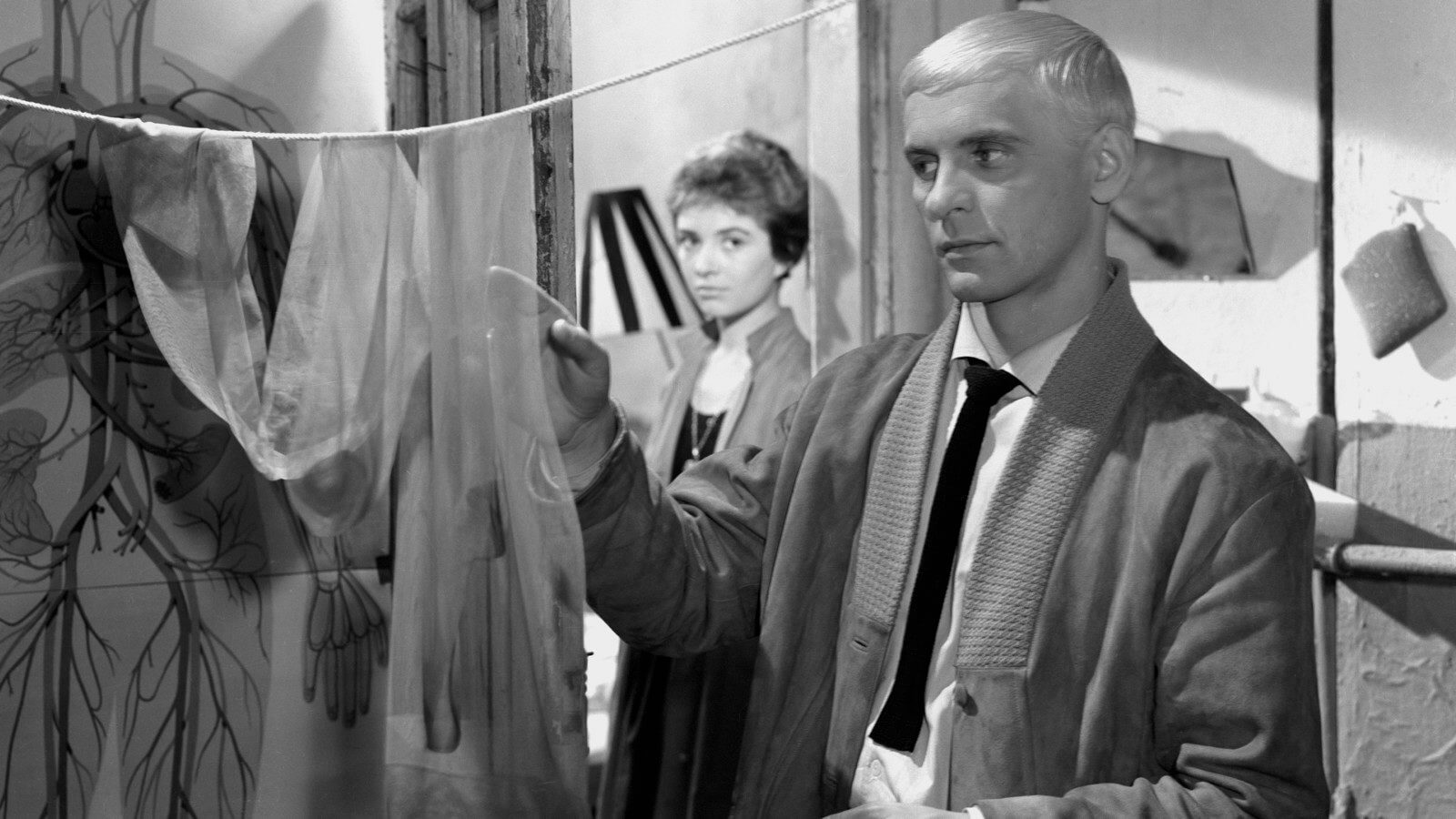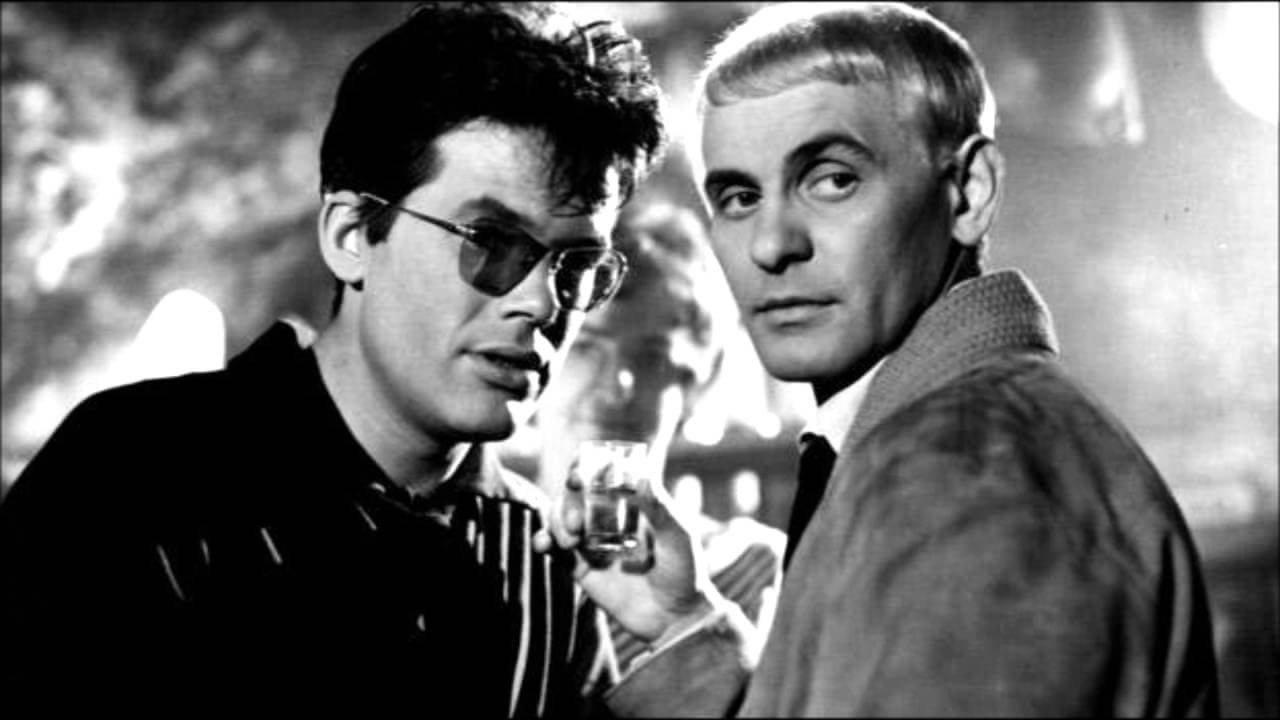INNOCENT SORCERERS. A masterful celebration of youth

Innocent Sorcerers was written by Jerzy Skolimowski in collaboration with Jerzy Andrzejewski (and it is likely that the influence of the former is most strongly felt), but it was Wajda who brought it to life. Taking a break from war, politics, and the homeland, he created an extraordinary, miniature masterpiece that remains relevant even sixty years after its premiere.
Apparently, the director feared that the censors might look unfavorably upon a scene in which the members of the titular jazz band – the Innocent Sorcerers – stagger and dance their way towards the Palace of Culture and Science. Ultimately, the scene made it into the film and is quite significant. It expresses the young generation’s desire to do everything their own way, contrary to what had been previously established and accepted as an unchangeable order (and supposedly, the scene was created on set as a result of improvisation!). Drinking vodka, wandering the streets at night, and playing “devilish” music in clubs shocked people in communist Poland and still shocks today. Innocent Sorcerers were the grandparents of today’s twenty-year-olds…

The film was made during the period of numerous new waves that swept through European cinema. The most famous is, of course, the French New Wave, which had the greatest and most significant impact on film-making and its nature. It is easy to consider Innocent Sorcerers within the context of an infatuation with the style of French auteurs, but this should not be exaggerated. The film begins with a title card, which turns out to be a poster on a pillar in the film’s reality. This clever play with the audience is a hint at what the film is about—games, appearances, and the masquerade of appearances. A young doctor, who moonlights as a musician—Bazyli—spends his days examining athletes and his nights playing jazz in a club. One evening, he meets a young student, Pelagia. However, do not expect a great spark—the romance begins slowly and certainly not romantically. The characters are not looking for love or relationships, but neither do they go to bed together after just a few lines of dialogue. It seems that their casual conversation, slow revelation of their cards, and the assumption of poses and masks are valuable in themselves. Neither wants to open up to the other nor is particularly eager to get to know the other.

In fact, this attitude reveals their emotional numbness. In this aspect, the viewing experience resembles another New Wave work: Hiroshima Mon Amour. In Alain Resnais’s film, the characters acted contrary to a classic melodramatic couple. They did NOT want to get closer, they did NOT want to fall in love. Hiroshima dealt with the trauma of war, specifically the atomic bombing of the titular city. In Innocent Sorcerers, there is no mention of any bomb (this sounds surreal in reference to this film), nor is there any mention of war, but the time and place of the action—Warsaw in the early sixties—may suggest that something remained in the memory and personality of the young people from the dramatic events. This unspoken uncertainty is much more significant to me than Cybulski dying on the street.

Or maybe it’s not like that at all? Perhaps the sorcerers are indeed innocent, unspoiled young people, cutting themselves off from the past, enjoying freedom and lack of obligations? Looking westward, expressing themselves through dress, expression, and superficiality, they simply exist and live in the moment, enchanting reality in any way they can. By juxtaposing two different types of personalities—the charismatic Tadeusz Łomnicki and the ethereal Krystyna Stypułkowska—Wajda ensures that he doesn’t lean too heavily on either side. He freely operates the handheld camera, giving the actors space to perform while remaining an observer himself. There is even a genuine interest from the director in his actors, which manifests in the free, often improvised—almost jazz-like—performances.

In the course of events, the most important elements are the details—single grimaces, glances, half-words, and gestures. Łomnicki’s character turns on the radio with his bare toe. When Pelagia says to him, “For a moment, it seemed to me that I fell in love with you,” he doesn’t let her finish the sentence and ties a knot on her mouth with a scarf. And so on. The characters speak to each other almost in verse, with each line carrying significant meaning. The film requires attention and openness. I don’t think it reached a wide audience at the time of its premiere, but today’s viewer—more accustomed to constantly receiving multiple pieces of information simultaneously and to multimedia forms composed of various types of communication—will catch more in just one viewing. For lack of a better word, Innocent Sorcerers could be considered a hipster film. The bourgeois fondness for possessing things for their character rather than their value, detachment from the mainstream, and creating an alternative culture—even niche—is simply a way of life here.

Thus, Innocent Sorcerers is a celebration of youth and sensitivity, as well as an expression of the freedom and liberty that young people dream of. In the background, young Roman Polański, co-writer Jerzy Skolimowski, and composer Krzysztof Komeda appear. Young artists, gathered around the budding master (Wajda had already succeeded with Kanal and Ashes and Diamonds), dance and stagger towards the Palace of Culture. Whether they want to storm it or bypass it—we don’t know and don’t need to know.

